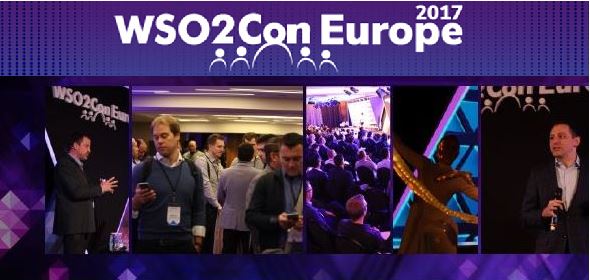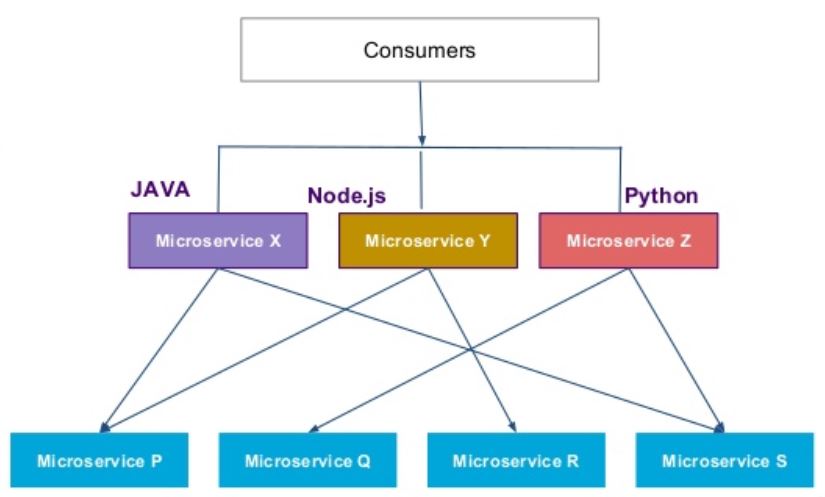The capital of England welcomed WSO2Con in November, the largest WSO2 event held in Europe.
The purpose of this event is to promote the latest digital trends with the goal of supporting company digital transformation.
If you missed the latest WSO2Con edition, in this post we will put you up to date with everything that happened, as well as the issues that were discussed the most in the convention. Are you ready?

Ballerina, the new programming language that makes integration great again.
Sanjiva Weerawarana, WSO2 founder, discussed his current and future vision on Ballerina. With this new program, the intention is to put aside ESB, with the purpose of making way for microservices.
– Discover the new era of programming languages with Ballerina –
In addition to this, Sanjiva explained that the acceleration of the development of coding applications such as Ballerina results from the fact that the use of specific languages and configurations no longer work. Languages in use nowadays are lacking in the field of asynchronous programming, but Ballerina solves this issue. Its future is therefore very promising.
Now, writing, managing and deploying code is fast thanks to the amazing SDLC tools, which enable code to be great again.
However, it is worth mentioning that Ballerina is more than a language, even when creating in several languages such as Java, C, C++, etc… We can claim that it is a complete, 100% open-source system. This fact sees it as the next step in connectivity and network applications in the future.
Some of Ballerina’s main features are:
- Event-driven parallel programming language for network applications.
- Design tailored to modern development practices.
- Text and graphic syntax with sequence diagram metaphor.
- Powerful type system: connectivity and resilience.
The development of Ballerina is a constant process, and little by little it is being integrated into WSO2 products. For example, Enterprise Integrator 7 will replace ESB and DSS with Ballerina. This fact implies a significant change in the programming model, but since a migration tool is available, this should tackle any issues that may be encountered.
Microservices, the key to developing applications and services.
The basis of microservices architecture (MSA) is the development of a single application as a set of fine-grained, independent services, with each microservice being in charge of its own process, development and deployment, independently.
Kasun Indrasiri, WSO2’s Integration Architecture Director, explained during his speech that microservices have been evolving through time, and as a result, nowadays business logics and network communication are scattered among independent services, which implies the elimination of the central ESB.
– Learn how to implement a microservices architecture –

Microservice Architecture (MSA) & Integration Microservices, WSO2Con.
Indrasiri stated that microservices depend, for the most part, on their intercommunication, to which he added that there are various communication patterns, such as the transfer of synchronized messages based on well-known and widely adopted protocols (HTTP). Additionally, it is important to point out that asynchronous messaging based on open protocols such as MQTT or AMQP are key when encouraging microservice autonomy.
“With MSA, business logic and network communication logic are scattered among independent services”.
Kasun explained that the more microservices are deployed and operating, the more the space of individual resources for each microservice will have to be taken into account. The following are aspects to consider when implementing MSA:
- Microservice implementation strategies.
- The role of domain driven design in the microservice architecture.
- Securing microservices (Oauth2, OpenIDI Connect and JWT).
- Microservice granularity and its organization.
- Several service records, ETCD.
There is also the possibility to create compound microservices through the integration of web APIs / SaaS, inherited systems and microservices. The API service or Edge Service is also an integration microservice with a few API gateway capabilities.
Indrasiri finished his talk highlighting three important aspects: the possibility of eliminating centralized ESB with microservices architecture, the importance of creating compound services using dedicated technology, and the integration of microservices with Ballerina.
The importance of identity management in digital transformation.
Nowadays, the safety of identity management in digital transformation is paramount.
– Identity & Access Management: Stay one step ahead of identity theft! –
Dimuthu Leelarathne, WSO2 Solution Architecture Director, gave a talk about the way in which identity and access management (IAM) is essential to “guarantee that the right persons are accessing the right resources at the right time and for the right reasons.”
If your company is knee-deep in the digital transformation of customer experience, or if you are thinking about starting this process, you should know that the simpler the IAM/Identity Access Management process is, the more chances you have to protect your customers, preventing them from leaving you for your competitors. However, Dimuthu highlights that, even though companies need to make the IAM process as simple as possible, security is never to be compromised.
Nowadays, implementing IAM implies a challenge for any company since, in addition to the coexistence of highly heterogeneous technological environments, one must comply with highly stringent requirements.
But, what are the challenges in IAM. Leelarathne sums them up into:
- Improving customer onboarding.
- Simpler and more transparent interaction (social logins, mobile devices, connecting, Google reCAPTCHA…)
- Standard compliance.
- Scalability
In order to explain the benefits of employing WSO2 to implement IAM in companies, Leelarathne gives the example of a multinational insurance provider in the USA.
Thanks to WSO2 Identity Server, this company succeeded in making the process simple and safe, benefiting from having all collected data in a single place. This fact makes the onboarding process much easier.

Identity & Access Management, Hands-On Session, WSO2Con
Current market trends demand greater security in digital identification, and in line with Dimuthu Leelarathne’s talk about the importance of IAM, we find the keynote by Marie Austenaa, GSMA’s VP Head of Personal Data & Mobile Identity.
Marie presented “Mobile Connect” in WSO2. This tool allows the user to be linked to his smartphone, thereby accessing various websites and applications without the need to enter his information and password time and again.
According to Austenaa, the success of this tool lies in its capability to stay ahead of growing market trends which require greater digital identity security. In that regard, Mobile Connect may be the solution, since in addition to providing security, it does not share the user’s personal information without his express consent.
In addition to the experts mentioned throughout this post, there were many more that shared their knowledge on WSO2, their experiences and case studies with the attendees, which was extremely enriching.
Besides being a sponsor-partner, Chakray also participated in the round table about WSO2 case studies in the WSO2Con event. More specifically, it was our CTO, Jack A. Rider, who sat next to industry professionals such as Sudaraka Jayashanka (CTO, Mitra Innovation), Damien Engrand (Consultant, Emoxa), among others…
After attending the conference, we could once again understand how the impact of WSO2 in digital agility is imminent, since there are many companies benefiting from its technology day after day.
WSO2 is a 100% open-source completely digital platform that offers all key technological elements for companies to carry out their digital transformation, including API management, integration, IAM, analysis and IoT.
Tyler Jewell, CEO and Director of WSO2, ensured that with WSO2’s products and support, all companies will be able to create and implement a successful digital transformation strategy.
See you on the next edition of WSO2Con Europe!







